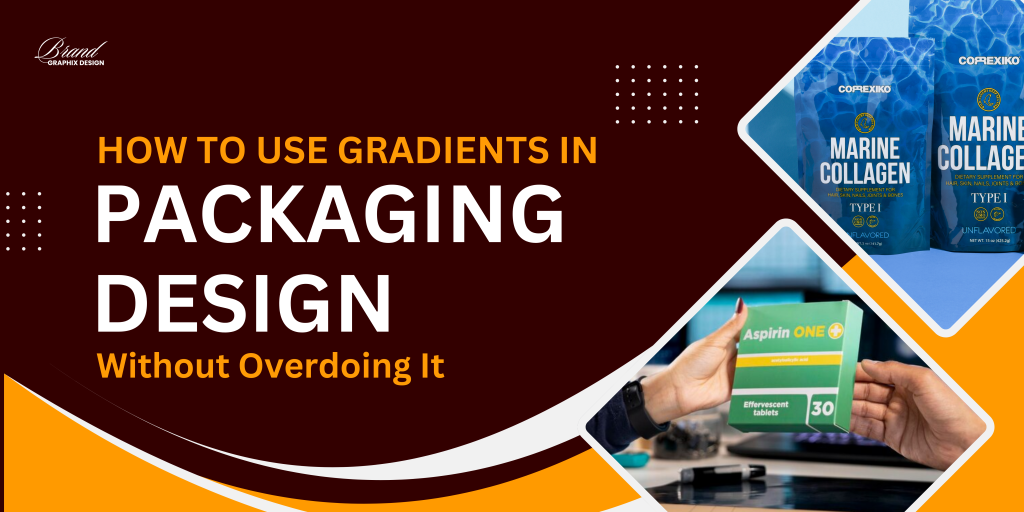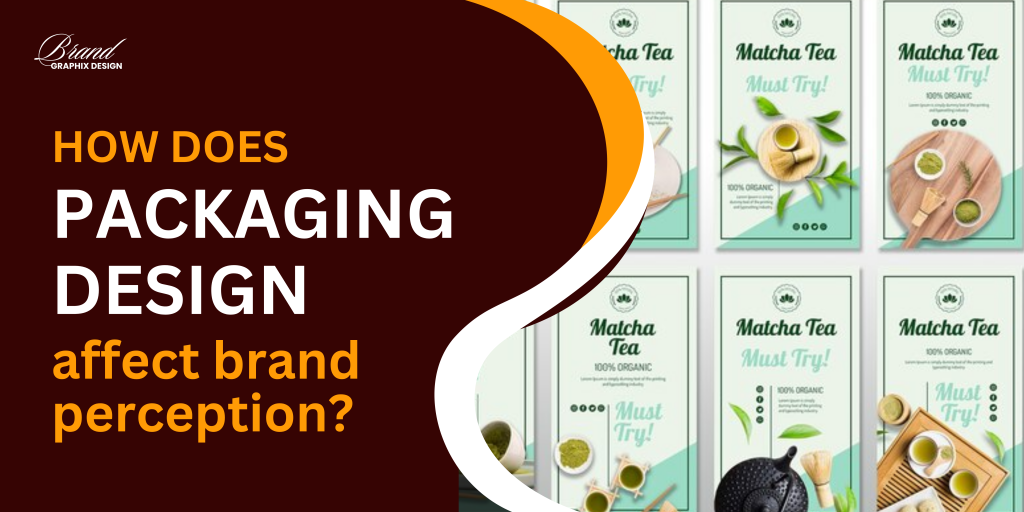Introduction: Gradients have become a popular trend in packaging design, adding depth, dimension, and a modern appeal. However, when overused or applied incorrectly, they can make a design look chaotic and unprofessional. The key to using gradients effectively in packaging is balance and subtlety. In this blog, we will explore how to incorporate gradients into packaging design without overwhelming the overall aesthetics, ensuring your product stands out for the right reasons.
Understanding the Role of Gradients in Packaging Design: Gradients help create visual interest by blending colors smoothly, making designs look dynamic and engaging. They can convey emotions, enhance brand identity, and give packaging a contemporary feel. However, using gradients requires a thoughtful approach to maintain harmony in design. Overuse of vibrant or clashing gradients can distract from essential branding elements. When applied correctly, gradients can add a touch of sophistication and innovation to packaging while maintaining readability and brand consistency.
Choosing the Right Color Combinations: The success of gradient-based packaging lies in selecting the right color combinations. Stick to complementary or analogous colors to ensure a seamless transition. Bright, clashing colors can create an overwhelming effect, making the packaging look cluttered. Instead, opt for smooth transitions that enhance the brand’s personality. Pastel gradients offer a soft and elegant appeal, while bold gradients can make a statement. Understanding color psychology and how different hues influence consumer perception is essential when choosing gradient shades.
Balancing Gradients with Minimalist Design: One of the best ways to use gradients effectively is by pairing them with minimalist design elements. A simple background with a well-placed gradient accent can make packaging look sophisticated. Avoid using multiple gradients in one design, as it can make the packaging appear chaotic. Instead, focus on subtle applications, such as in logos, text, or small sections of the packaging. This ensures that gradients enhance the design without overpowering it, maintaining a clean and professional aesthetic.
Using Gradients to Highlight Key Elements: Gradients can be used strategically to draw attention to important aspects of packaging, such as product names, logos, or special features. A gradient highlight behind text can make it stand out, improving readability while maintaining an aesthetically pleasing look. Instead of applying gradients randomly, use them to guide the viewer’s eye toward focal points. This creates a hierarchy in design, ensuring key messages are emphasized effectively without overwhelming the overall composition.
Incorporating Gradients in Typography: Typography is a critical component of packaging design, and gradients can add a creative touch to text elements. When applying gradients to typography, ensure the text remains legible. Subtle gradients within letters can create a unique effect without compromising readability. Avoid using gradients in large text blocks, as they can make reading difficult. Instead, use gradient-filled headlines or accents within typography to add a dynamic element while maintaining clarity.
Applying Gradients to Backgrounds and Patterns: Gradients can enhance backgrounds and patterns by adding depth and visual interest. However, they should not overshadow other design elements. A soft gradient background can create a premium feel without overpowering the product’s branding. Using gradients in patterns, such as geometric or organic shapes, can add texture while maintaining a cohesive design. The key is to ensure that the gradient complements the overall packaging theme rather than competing with it.
Leveraging Transparency and Opacity in Gradients: A great way to use gradients subtly is by adjusting their transparency and opacity. Soft, translucent gradients can create an ethereal effect, adding sophistication without dominating the design. Layering gradients with different opacity levels can add depth and dimension while keeping the overall look clean. This technique works particularly well for luxury packaging, where subtlety and refinement are crucial for brand perception.
Combining Gradients with Other Design Elements: Gradients work best when combined with other design elements, such as illustrations, icons, or photography. When used in combination with textures or 3D elements, gradients can create a futuristic and modern appeal. However, balance is key. If the packaging already has a lot of detail, a simple gradient can enhance the overall aesthetic. Conversely, if the design is minimalist, a bolder gradient may add the necessary visual appeal without cluttering the layout.
Avoiding Common Mistakes When Using Gradients: Many designers make the mistake of using too many colors or overly complex gradients, resulting in a busy design. Another common mistake is not considering how the gradient will appear in print versus on digital screens. Some gradients may look appealing on a computer but become muddy or distorted when printed. Testing gradients in different lighting conditions and print formats ensures the final design remains high quality. Keeping gradients smooth and avoiding harsh transitions helps maintain a polished look.
Testing Gradients for Print and Digital Use: Before finalizing a gradient-based design, it is essential to test how it translates from digital to print. Colors may appear differently on screens compared to printed packaging, so adjusting saturation and contrast is necessary. Gradient banding, where colors do not transition smoothly, can be an issue in print design. Using high-quality printing techniques and gradient-friendly formats can help ensure seamless color transitions. Always conduct test prints to verify that the gradient maintains its intended effect.
Future Trends in Gradient-Based Packaging DesignL: Gradients continue to evolve in packaging design, with emerging trends focusing on holographic and metallic gradient effects. These effects add a futuristic touch to packaging, appealing to modern consumers. Sustainable brands are also incorporating subtle gradients using eco-friendly printing techniques. The rise of digital packaging experiences, such as augmented reality (AR) features, allows designers to experiment with interactive gradient designs. Staying updated with these trends ensures your packaging remains relevant and innovative.
Conclusion: Using gradients in packaging design can elevate a brand’s visual identity when applied thoughtfully. The key is to strike a balance between vibrancy and subtlety, ensuring gradients enhance rather than overpower the design. Choosing the right color combinations, applying gradients strategically, and testing for print quality are essential steps to achieving a polished look. By following these principles, brands can create visually appealing packaging that captivates consumers while maintaining a professional and sophisticated aesthetic.




